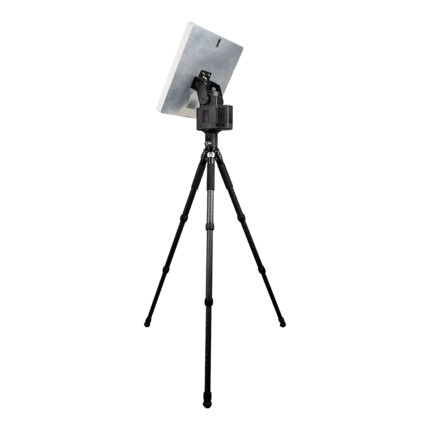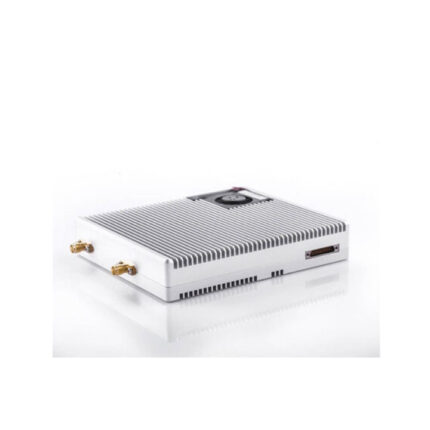ULSCmesh Series Four-band Switching (1T2Rx2) Wireless Broadband Ad Hoc Network Performance
● The world’s first, industry-leading
● Supports 4 frequency bands including UHF, S Band, L Band and C Band. Band selection and switching operations are supported.
● Handheld (airborne) or 10/20-watt portable (ground-based) with single-channel transmit power of 2/4 watts. Efficient linear silicon-based gallium arsenide power amplifier.
● Two sets of four-antenna transceivers for one transmit and two receive. -103 dBm @ 5 MHz high receiving sensitivity. Urban ground 1-30 kilometers, open line-of-sight 50-300 kilometers
● Space-time coding, high-speed throughput above 65 Mbps; Spatial frequency multiplexing, no rate drop for more than three hops. o
● Classic SDR platform, with complete control over both software and hardware
● HTDMA, large-scale network setup with more than 256 nodes
● Inter-frequency intelligent channel selection networking, and the powerful anti-interference capability of dynamic adaptive frequency hopping
● Supports software encryption such as DES/AES, as well as hardware encryption for TF cards.
● Compatible and interoperable with the MIMOmesh/SMARTmesh/BEAMmesh series
● PDT/DMR digital walkie-talkie, and 4G/5G router are expandable
●IP67 waterproof, military-grade for harsh environments
MIMOmesh Series Dual-band simultaneous operation (2T2Rx2) wireless broadband ad hoc network Technical Indicators
| Overall | |
| SDR platform, waveform | Dual9361 + Dual7Z030/7Z035, Mobile Network MANET |
| MIMO technology | Space-time coding, receive diversity, TX/RX beamforming |
| Receiving sensitivity | -103dBm@5MHz BW |
| Working channel bandwidth | 1.25/2.5/5/10/20 MHz can be set |
| Transmission rate | 1 – 65 Mbps (20 MHz bandwidth) adaptive, QoS |
| Modulation method | TD-COFDM, BPSK/QPSK/16QAM/64QAM adaptive (fixed setting optional> |
| RF output power(Supports TPC power self-adaptation, 1dBm adjustable> | 2-watt / 4-watt handheld / airborne, 10-watt / 20-watt portable / vehicle-mounted, 4 channels correspond to UHF, L band, S band, C band frequency bands, single transmit and dual receive switching operation |
| Single-hop communication distance | 100 – 300 kilometers (full view), 1 – 30 kilometers (urban area) |
| Communication method | Distributed decentralized point-to-point / point-to-multipoint / multipoint-to-multipoint, two-layer or three-layer dynamic routing, multi-hop Relay, star type / linear type / mesh type / mixed dynamic |
| Single-hop delay | Average 10ms (20MHz bandwidth) |
| Security encryption | DES, AES128/256, SM4, SM4, SNOW3G/ZUC optional, chip/TF card encryption customization or external security module |
| Anti-interference working mode | Manual channel selection for spectrum scanning, full-band enhanced intelligent frequency selection (spectrum sensing)/full-band adaptive frequency hopping FHSS/ roaming mode, multi-level anti-interference |
| Local/Remote management | Parameter settings for working frequency, channel bandwidth, network ID, transmission power, etc., spectrum scanning, network topology, link field strength signal-to-noise ratio, upload/download traffic, node distance, etc. real-time display and statistical recording GPS/BD/GLONASS positioning electronic map, temperature/voltage/interference monitoring, software upgrade. Remote silent and wake-up optional |
| Others | Boot-up time less than 28 seconds, network entry/update/switching time less than 1 second Single system user capacity unlimited (more than 256), self-organizing network jump times unlimited (data 15+ jumps, voice 10+ jumps, video 8+ jumps), total bandwidth loss of more than three jumps less than 70% Automatic carrier tracking, adapt to Doppler frequency shift of ±6kHz frequency deviation, support mobile communication at a speed of more than 7200 kilometers per hour (6 Mach, 2000 meters per second) |
| Working frequency band selection (300M – 6GHz customizable. Supports TDD with either the same frequency or different frequencies for transmission and reception. Four-band single-transmit-dual-receive 1T2R dual combination.) | |
| Frequency band | Frequency range |
| UHF | 430-550/570-700/800-950, 225-400/320-470* |
| L Band (GHz) | 1000-1200/1300-1500/1600-1800/1800-2000, 1200-1700* |
| S Band (GHz) | 2.0-2.2/2.2-2.5/2.5-2.7/2.7-2.9/3.4-3.6,1.6-2.3/1.9-2.7* |
| C Band (GHz) | 4.4-5.0/5.25-5.85,4.2-5.2/5.5-6.0* |
| (Note*: Power varies with volume, size and weight) | |
| China Ministry of Industry and Information Technology (MHz) 336-344/512-592/566-626/606-678/1420-1520/1430-144 | |
| Whole structure | |
| Size/Weight | 21.0 x 6.8 x 5.2 cm / 0.972 kg (including a 11.1V/77.7Wh battery for a four-band handheld radio) |
| 22.9 x 18.9 x 6.5 cm / 2.95 kg (including a 22.2V/427Wh battery for a four-band backpack radio) | |
| Installation / Color | 4 mounting holes, earpiece / black, iron gray, military green optional |
| Power supply | |
| Supply voltage | 12-36VDC, 2W/4W handheld |
| 18-32VDC, 10W/20W backpack | |
| Power consumption | Working: 1.5A, Standby: 0.6A @ 12V, 2W/4W handheld |
| Working: 4A, Standby: 0.8A @ 16.8V, 10W/20W backpack | |
| Power Supply Selection | Powered by rotating snap-in battery or main cable |
| Battery | 12-16/8-12 hours for 114/77.7Wh (handheld radio >) |
| 14-18/8-12 hours for 427/213Wh (backpack radio) Polymer lithium battery | |
| Interface | |
| Basic interface | 4xTNC RF, 1-3xRJ45 Ethernet 100/1000BaseT, WIFIAP, GPS/Beidou, RS232/TTL (UART), Sbus/Bluetooth, 1.2 – 230.4Kbps, DC input |
| Voice intercom / auxiliary interface | MIC, SP, PTT, GND, RS485/422, USB2.0 OTG |
| Network expansion options | Public network routing/4G LTE private network, wide and narrow integration, satellite, fiber optic |
| Video expansion option | Low latency HDMI/SDI/CVBS, 4K/2K/1080P/720P/D1 |
| Link status indicator ligh | Red light always on – not connected to network; Red light flashing – booting/ not connected to network; Green light always on – connected to network; Green light flashing – voice PTT has been pressed |
| RSSI Link Indicator Light | Green light always on – excellent link quality; Blue light always on – good link quality; Yellow light always on – medium link quality; Purple light always on – slightly poor link quality; Red light always on – poor link quality; |
| Management interface / control interface | Light off – link interruption |
| Environment | |
| Working temperature | -40°C ~+80°C |
| Protection level | IP66, IP67/IP68 Customization |












